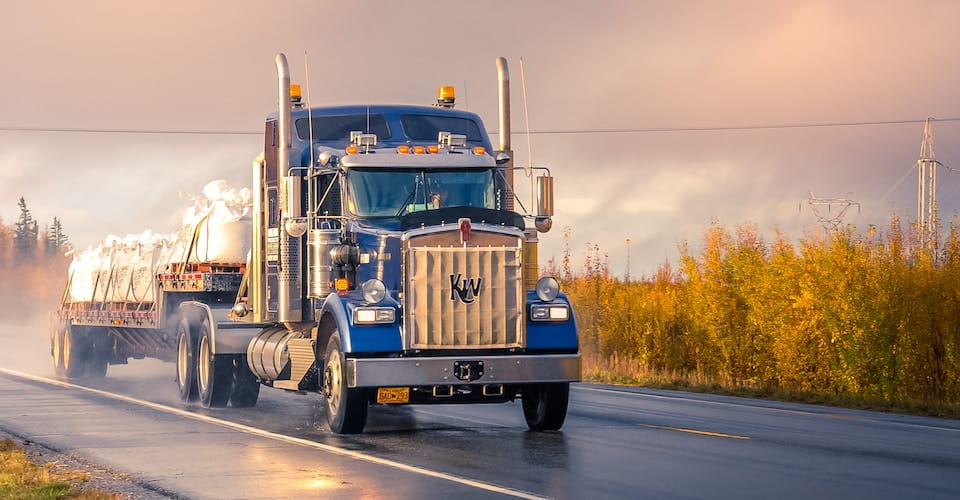
Whether at home, in the car, on the farm or beyond, millions of Americans depend on energy to power their lives. That’s why abundant, reliable fuel sources are essential to our energy mix.
You might not realize it, but propane is one of the United States’ most abundant energy commodities. A clean-burning, nontoxic gas, propane has filled a significant role in America’s energy economy for more than a century — and more recently, the rest of the world has taken notice.
The U.S. is the world’s number-one producer of propane, and because we have it in such ample supply, every year we export more than 10 billion gallons of it. That’s enough to fuel 4 million fleet vehicles or power 12 million homes.
But how exactly does American-made propane go from its source here in the U.S. to its many destinations, domestic and abroad? It’s a multi-step process, one that depends on many different operations working seamlessly together.
The whole process begins at natural gas processing plants and petroleum refineries. Before natural gas or petroleum can be used as fuels, they must first be purified, releasing propane as a byproduct. Newly produced propane is stored in large tanks and underground facilities.
From there, about half of America’s propane is shipped to thousands of storage facilities across the U.S. These plants are equipped with steel tanks that can hold 30,000 to 60,000 gallons of propane each.
Once its ready to be transported to end users, propane is carried aboard special trucks made of thick, high-strength steel. Domestically, propane is used by millions of residential, commercial and industrial customers.
But propane’s domestic lifecycle is only half the story. For the millions of gallons American-made propane that are used abroad, the journey has only just begun.
The biggest buyers of American propane include Asian countries such as China, Japan and South Korea. Chemical manufacturers in these regions often use propane for making plastic products.
Another major need American propane fulfills abroad is transportation fuel. Mexico, as well as many South American and European countries, rely heavily on propane-powered vehicles.
While propane’s top uses in the U.S. may be heating homes and drying grain, this American-made fuel proves to be versatile enough to meet a variety of different needs around the world.
By being proactive, though, farmers can minimize the volatility in their supply. The best thing propane customers can do for themselves is to ensure they have adequate onsite storage capacity and communicate with their local cooperative.
As an operation grows in scale or acreage, propane storage should increase accordingly. By “right-sizing” a tank, customers are better able to take advantage of favorable bulk pricing, giving them the confidence to manage through peak demand periods.
To learn more about bulk propane storage options, contact your local cooperative and ask about right-sizing your tank.
You might not realize it, but propane is one of the United States’ most abundant energy commodities. A clean-burning, nontoxic gas, propane has filled a significant role in America’s energy economy for more than a century — and more recently, the rest of the world has taken notice.
The U.S. is the world’s number-one producer of propane, and because we have it in such ample supply, every year we export more than 10 billion gallons of it. That’s enough to fuel 4 million fleet vehicles or power 12 million homes.
But how exactly does American-made propane go from its source here in the U.S. to its many destinations, domestic and abroad? It’s a multi-step process, one that depends on many different operations working seamlessly together.
How American-made propane Is produced
Nearly 90 percent of America’s propane supply is produced domestically. Every day, U.S.-based facilities churn out 2 million barrels of it.The whole process begins at natural gas processing plants and petroleum refineries. Before natural gas or petroleum can be used as fuels, they must first be purified, releasing propane as a byproduct. Newly produced propane is stored in large tanks and underground facilities.
From there, about half of America’s propane is shipped to thousands of storage facilities across the U.S. These plants are equipped with steel tanks that can hold 30,000 to 60,000 gallons of propane each.
Once its ready to be transported to end users, propane is carried aboard special trucks made of thick, high-strength steel. Domestically, propane is used by millions of residential, commercial and industrial customers.
But propane’s domestic lifecycle is only half the story. For the millions of gallons American-made propane that are used abroad, the journey has only just begun.
How American-made propane Is used abroad
Thanks to large increases to U.S production capacity over the last decade, half of America’s propane supply is exported globally, up from just 10 percent in 2009. Every day, 1 million barrels are shipped to countries around the world.The biggest buyers of American propane include Asian countries such as China, Japan and South Korea. Chemical manufacturers in these regions often use propane for making plastic products.
Another major need American propane fulfills abroad is transportation fuel. Mexico, as well as many South American and European countries, rely heavily on propane-powered vehicles.
While propane’s top uses in the U.S. may be heating homes and drying grain, this American-made fuel proves to be versatile enough to meet a variety of different needs around the world.
What the global propane market means for farmers
Because propane is a global commodity, its value can be subject to a mixture of complex influences. For example, strong U.S. exports combined with expectations of a cold winter can quickly tighten domestic inventories, causing prices to spike.By being proactive, though, farmers can minimize the volatility in their supply. The best thing propane customers can do for themselves is to ensure they have adequate onsite storage capacity and communicate with their local cooperative.
As an operation grows in scale or acreage, propane storage should increase accordingly. By “right-sizing” a tank, customers are better able to take advantage of favorable bulk pricing, giving them the confidence to manage through peak demand periods.
To learn more about bulk propane storage options, contact your local cooperative and ask about right-sizing your tank.












